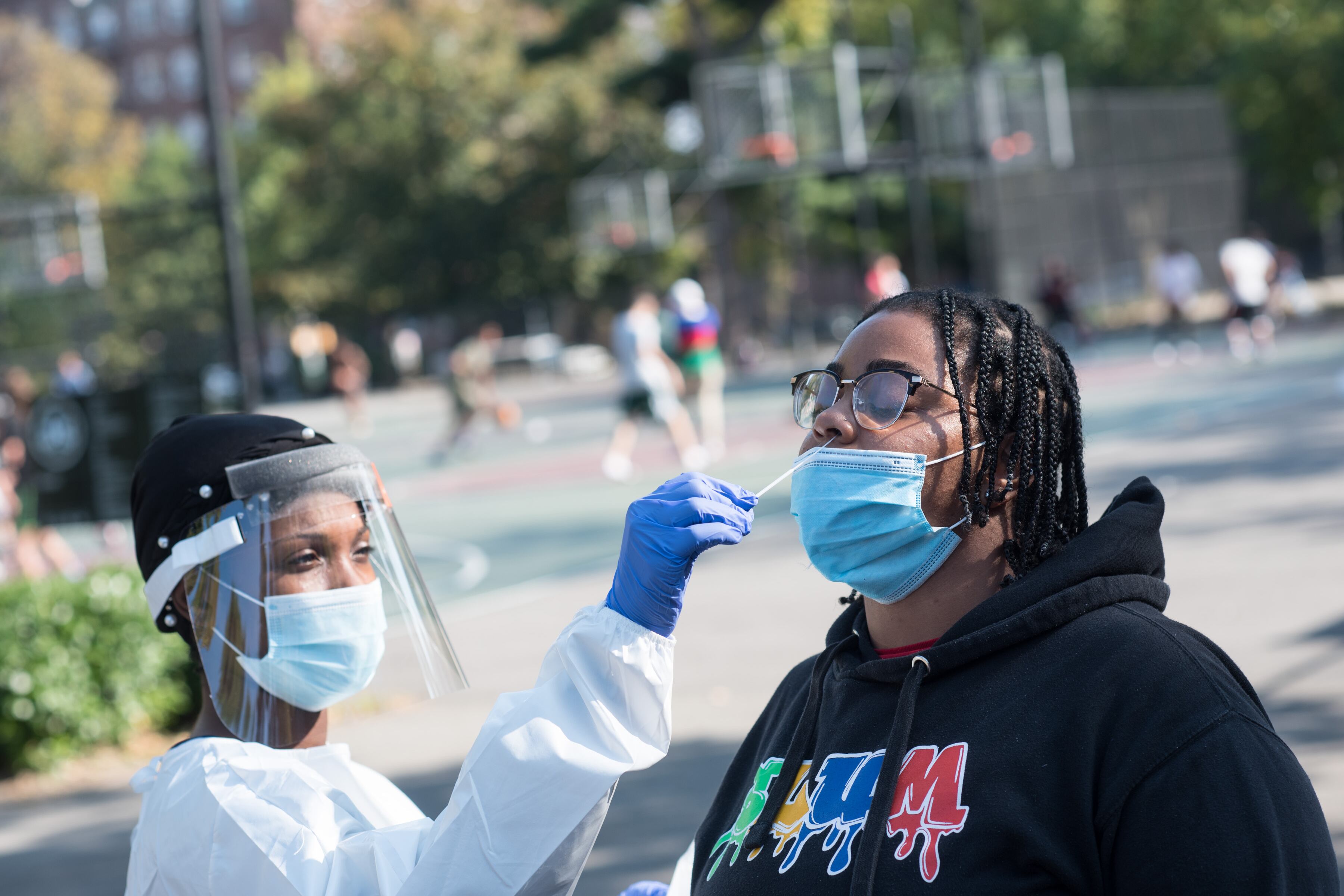Now that New York City students are back in school buildings, a massive coronavirus testing program will begin next week in an attempt to detect COVID-19 and curb its spread in classrooms.
The city’s education department is asking parents to sign up their children — but are now backpedaling earlier statements that students whose families don’t consent will be forced to switch to remote-only classes.
Facing pressure from the teachers union, city leaders agreed to test 10-20% of students and staffers at random each month. The city’s plans originally called for mandatory testing for those attending school in person, which sparked concern from some parents.
Now city schools will work with families to get them on board, according to a letter that Schools Chancellor Richard Carranza wrote this week with the city’s health commissioner and the head of the Test and Trace program.
“We want to assure you that if your child is selected for testing but is uncomfortable or unable to be tested, we will not test your child and work with you to address any concerns so that they can participate in future testing,” the letter, posted on Twitter, said. “We are focused on making this a brief, and gentle experience for our students, led by trained testers.”
The education department said it will make “repeated asks” that families allow their children to be tested. If a school community cannot meet its threshold for testing, students who were asked to provide consent but failed to do so would then have to transition to fully remote learning, according to spokesperson Miranda Barbot.
Already, 48% of students have opted for virtual-only instruction. The rest are expected to return to classrooms for at least one day a week, and learning online the rest of the time.
United Federation of Teachers President Michael Mulgrew pushed back against the latest guidance from the department of education. The union pointed to a plan city leaders submitted to the state education department, which calls for students who don’t consent to testing to be placed in a virtual classroom.
“We expect the DOE to meet the standards of the agreement. We also expect them to send out clear communications to parents and school communities, which was not done in this case,” he said in a statement.
The union did not outline whether it would take any action. This summer, teachers threatened a strike vote unless the city expanded testing and followed through on a litany of other safety protocols.
When the testing program was announced earlier this month, city leaders admitted that some details were still being ironed out. But City Councilman Mark Treyger, who chairs the education committee, said the conflicting information put principals in a tough spot. They’ve hustled to collect consent forms from families, only to face questions about whether testing is really mandatory or if schools can level consequences if students don’t participate.
“Now people are very confused,” Treyger said.
Anna Bershteyn, an assistant professor of population health at the NYU Grossman School of Medicine, said it is normal for some people to decline testing, and schools should still be able to detect outbreaks so long as most people participate.
More important, she said, is that people get tested when they have symptoms and cooperate with contact tracers if they do come down with the virus.
“Those activities have a big impact on how well we can contain outbreaks and keep everyone safe,” she said.
But wearing masks properly, practicing social distancing guidelines, and ensuring good airflow are even more important, Bershteyn said, noting: “If this is done exceptionally well, schools could open safely regardless of testing, as other countries like South Korea have shown.”
In New York City, testing is expected to take place during the school day. Union and city leaders have not said how students and teachers will be picked for sampling. Nasal swabs and saliva tests — not the more invasive procedure that reaches far back into the nasal cavity — will be used. Some students may be able to administer the test themselves, according to the city.
In schools with enrollments of up to 499 students and staff, 20% of the population will be tested each month. At those with 500-999 people on campus, 15% of students and staff will undergo testing. At schools with enrollment exceeding 1,000, 10% will be tested.
Children are expected to be out of class for the procedure for no more than 30 minutes. Results are expected within 48-72 hours.
Families will be notified about two days before testing takes place, at which point anyone who has consented may be included in the samples taken. Parents of a child who was swabbed will learn about it after that school day, according to an FAQ sheet the education department has posted online.
Children in pre-K and kindergarten will not be included in random sampling.
A positive test could trigger the closure of a classroom, while multiple cases at a single school could shut down a whole campus. For more information about how these decisions are made, read our past coverage.
Teachers and children were encouraged to get tested before returning to campuses, too. State data shows that 146 school-aged children and staffers tested positive for COVID-19 between Sept. 8 and Sept. 29. Some buildings have already temporarily shut down after multiple people tested positive at the same campus.
The city has seen a troubling rise in coronavirus cases in some neighborhoods, which could have implications for keeping schools open. The mayor has said buildings will close if the citywide test positivity rate exceeds 3%. In some neighborhoods, the rate has surged past 5%.







